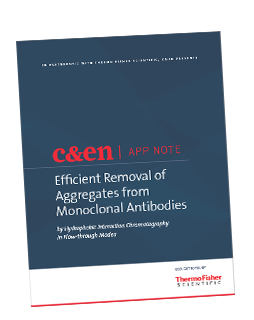
Monoclonal antibody (mAb) therapeutics have been widely used to treat various diseases, including cancer. Oftentimes, dimers and other high molecular weight aggregates are present in the mAb therapeutics, leading to reduced biological activity. Traditionally-used methods for aggregate removal rely heavily on anion exchange chromatography (AEX) in flow-through mode followed by a generic bind/elute polishing step. While there are several advantages associated with these methods, they are often time-consuming and expensive. This whitepaper reports the use of hydrophobic interaction chromatography (HIC) in lieu of the generic bind/elute polishing step, for the removal of aggregates from mAb therapeutics. HIC is a more simple and cost-effective method, leading to higher selectivity towards mAb aggregate removal.